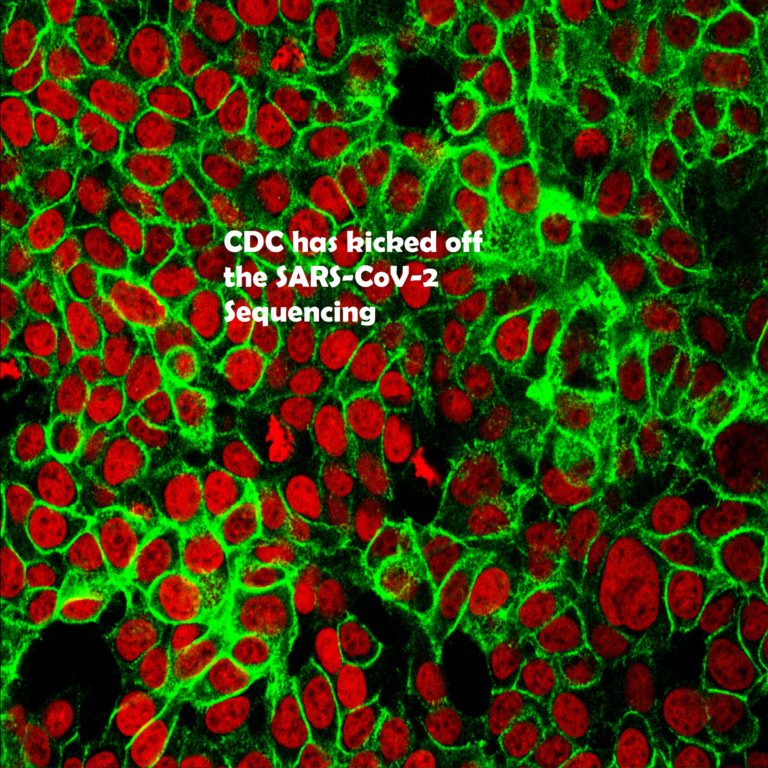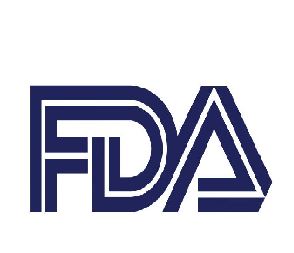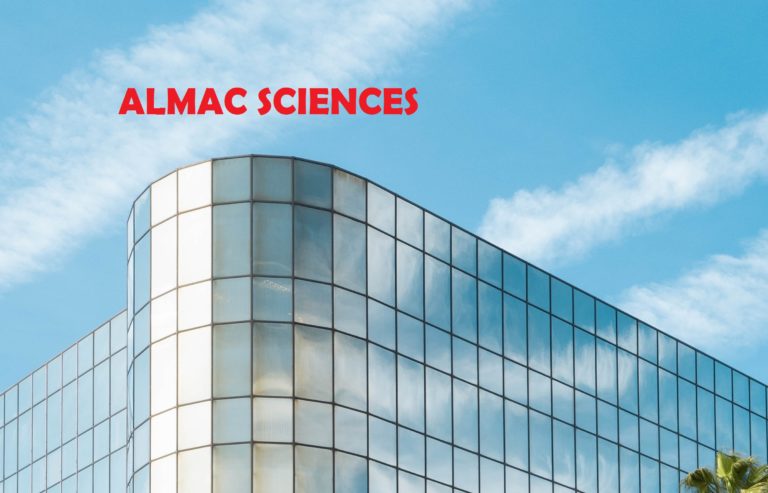May 01, 2020: “Novartis announced that the European Medicines Agency’s (EMA) Committee for Medicinal Products for Human Use (CHMP) has adopted a positive opinion recommending the approval of Enerzair® Breezhaler® (QVM149; indacaterol acetate, glycopyrronium bromide and mometasone furoate [IND/GLY/MF]) as a maintenance treatment of asthma in adult patients not adequately controlled with a maintenance combination of a long‑acting beta2‑agonist (LABA) and a high dose of an inhaled corticosteroid (ICS) who experienced one or more asthma exacerbations in the previous year.
If approved, this will be the first once-daily LABA/long-acting muscarinic antagonist (LAMA)/ICS fixed-dose combination for these patients.
The European Commission (EC) reviews the CHMP recommendation and usually delivers its final decision in approximately two months.
“This is an important development for patients with uncontrolled asthma because IND/GLY/MF has been shown to improve lung function and symptoms versus a LABA/ICS standard-of-care,” said Professor Huib Kerstjens, Head, Department of Pulmonology at the University Medical Center Groningen.
“In secondary analyses of the Phase III IRIDIUM study statistically significant reductions in moderate-to-severe and severe asthma exacerbation rates were observed with high-dose IND/GLY/MF compared to high-dose salmeterol xinafoate/fluticasone propionate.”
IND/GLY/MF will be administered via the dose-confirming Breezhaler® device, which enables once-daily inhalation using a single inhaler.
If approved, IND/GLY/MF will be the first asthma treatment in the EU that can be prescribed together with a digital companion; a Propeller Health sensor and app custom-built for the Breezhaler® device.
This companion will provide patients with inhalation confirmation, medication reminders and access to objective data that can be shared with their physician in order to help them make better therapeutic decisions.
“Today’s news is a key milestone in our journey to reimagine asthma care by bringing innovative medicines and a digital companion to patients with uncontrolled asthma,” said Linda Armstrong, MD, Respiratory Development Unit Head, Novartis Pharmaceuticals. “Once-daily IND/GLY/MF has the potential to improve asthma control for patients whose lives are still impacted by their disease, despite existing inhaled therapies. Additionally, we are pleased to bring an innovative sensor and app companion supplied with IND/GLY/MF to patients to help support enhanced adherence.”
The CHMP recommendation is based on robust efficacy and safety data from over 3,000 patients with asthma from the Phase III IRIDIUM study, in which IND/GLY/MF demonstrated statistically significant improvements in lung function compared with indacaterol acetate/mometasone furoate (IND/MF).
In the IRIDIUM study, the key secondary endpoint was the improvement in Asthma Control Questionnaire score (ACQ-7) for IND/GLY/MF versus IND/MF. Both treatments delivered clinically meaningful improvements in this measure of symptoms from baseline at Week 26, but the key secondary endpoint was not met.
Among other secondary analyses, IRIDIUM explored asthma exacerbation rates, where statistically significant reductions were observed in moderate-to-severe and severe asthma exacerbation rates with IND/GLY/MF compared with an established LABA/ICS standard-of-care (twice-daily salmeterol xinafoate/fluticasone propionate). Safety findings were consistent with the known safety profiles of the monocomponents.
Last month the CHMP also recommended the approval of Atectura® Breezhaler® (IND/MF) as a maintenance treatment of asthma for adults and adolescents 12 years of age and older not adequately controlled with inhaled corticosteroids and inhaled short-acting beta-agonists.
Novartis is committed to bringing IND/GLY/MF and IND/MF to patients, with additional regulatory filings currently underway in multiple countries, including Switzerland, Japan and Canada.
In keeping with the Novartis commitment to reduce the environmental impact of our asthma combinations, IND/GLY/MF and IND/MF will both be available in the Breezhaler® device which is hydrofluoro alkane/chlorofluorocarbon (HFA/CFC)-free.
Asthma affects an estimated 358 million people worldwide and can cause a significant personal, health and financial burden when not adequately controlled.
Despite current therapy, over 40% of patients with asthma at Global Initiative for Asthma (GINA) Step 3, and over 45% at GINA Steps 4 and 5 remain uncontrolled.
Patients with uncontrolled asthma may downplay or underestimate the severity of their disease and are at a higher risk of exacerbation, hospitalization or death.
Barriers, such as treatment mismatch, safety issues with an oral corticosteroid and ineligibility for biologics, have created an unmet medical need in asthma.
Enerzair® Breezhaler® (QVM149; IND/GLY/MF) is intended as a maintenance treatment of asthma in adult patients not adequately controlled with a maintenance combination of a long‑acting beta2‑agonist and a high dose of an inhaled corticosteroid who experienced one or more asthma exacerbations in the previous year.
This formulation combines the bronchodilation of indacaterol acetate (a LABA) and the antimuscarinic effects of glycopyrronium bromide (a LAMA) with mometasone furoate (high-dose ICS) in a precise once-daily formulation, delivered via the dose-confirming Breezhaler® device.
Glycopyrronium bromide certain use and formulation intellectual property were exclusively licensed to Novartis in April 2005 by Sosei Heptares and Vectura. Mometasone furoate is exclusively licensed to Novartis from a subsidiary of Merck & Co., Inc, Kenilworth, NJ, USA, for use in IND/GLY/MF (worldwide excluding the U.S.).
The sensor for the Breezhaler® device was developed by Propeller Health and is a CE marked Medical Device, designed and licensed to Novartis exclusively for use with the Breezhaler® inhaler worldwide.
The sensor includes a microchip, a microphone, Bluetooth capabilities, an antenna and a battery.
The sensor does not alter the drug delivery characteristics of the Breezhaler® inhaler itself but produces a recording of each administered dose. Based on the patient’s recorded medication usage, personalized content is presented within the app to help the patient better self-manage their asthma.
Atectura® Breezhaler® (QMF149; IND/MF) is the combination of indacaterol acetate and mometasone furoate intended as a maintenance treatment of asthma in adults and adolescents 12 years of age and older not adequately controlled with ICS and inhaled short-acting beta-agonists.
IND/MF combines the bronchodilation of indacaterol acetate (a LABA) with the anti-inflammatory mometasone furoate (an ICS) in a precise once-daily formulation, delivered via the dose-confirming Breezhaler® device. Mometasone furoate is exclusively licensed to Novartis from a subsidiary of Merck & Co., Inc, Kenilworth, NJ, USA, for use in IND/MF.
The PLATINUM program, containing over 7,500 patients worldwide, is the Novartis Phase III clinical development program supporting the development of IND/GLY/MF and IND/MF.
It includes four studies: the QUARTZ study, which compared a low-dose of IND/MF with MF alone; the PALLADIUM study, which compared IND/MF with MF and salmeterol xinafoate/fluticasone propionate (Sal/Flu); the IRIDIUM study, which compared IND/GLY/MF with IND/MF and Sal/Flu; and the ARGON study, which compared IND/GLY/MF with a combination of Sal/Flu and tiotropium.
IRIDIUM was a Phase III, multicenter, randomized, double-blind, parallel-group study, designed to compare the efficacy and safety of IND/GLY/MF with IND/MF in patients with asthma.
The purpose of the trial was to evaluate the efficacy and safety of two different doses of IND/GLY/MF (High: 150/50/160 μg and Medium:150/50/80 μg), versus two respective IND/MF doses (High: 150/320 μg and Medium: 150/160 μg) in patients with uncontrolled asthma, as determined by pulmonary function testing and effects on asthma control.
All patients were required to be symptomatic at screening despite being on treatment with medium or high stable doses of LABA/ICS. Approximately 3,092 male and female adult patients with asthma were randomized 1:1:1:1:1 (approximately 618 patients in each of the treatment groups) to receive either:
- IND/GLY/MF 150/50/80 μg (once-daily)
- IND/GLY/MF 150/50/160 μg (once-daily)
- IND/MF 150/160 μg (once-daily)
- IND/MF 150/320 μg (once-daily)
- Sal/Flu 50/500 μg (twice-daily, via Accuhaler®)
The primary objective of this study was to demonstrate the superiority of both high-dose IND/GLY/MF versus high-dose IND/MF and medium-dose IND/GLY/MF versus medium-dose IND/MF, all delivered once-daily, in improving trough FEV1 (volume of air that can be forced out in the first second of expiration approximately 24 hours post-administration of study drug) after 26 weeks of treatment in patients with asthma.
The key secondary objective was to demonstrate the superiority of both doses of IND/GLY/MF versus respective doses of IND/MF, in improving Asthma Control Questionnaire (ACQ-7) score after 26 weeks of treatment in patients with asthma.
Other secondary analyses also included reduction of exacerbation rate, comparing high-dose IND/GLY/MF with high-dose IND/MF and medium-dose IND/GLY/MF with medium-dose IND/MF. Secondary analyses included efficacy comparisons for both doses of IND/GLY/MF compared with Sal/Flu (50/500 μg).
The study showed that IND/GLY/MF was superior to IND/MF in improving trough FEV1 after 26 weeks, meeting the primary endpoint. The key secondary endpoint, improvement in ACQ-7 score for IND/GLY/MF versus IND/MF was not met but tested treatments showed clinically meaningful improvements in this measure of symptoms from baseline at Week 26. Among other secondary analyses, a substantial reduction was observed in moderate-to-severe and severe asthma exacerbation rates with IND/GLY/MF compared with twice-daily Sal/Flu (50/500 µg).
IND/GLY/MF was generally well tolerated, and safety was comparable across treatment arms.
PALLADIUM (NCT02554786) was a multicenter, randomized, 52-week treatment, double-blind, triple-dummy, parallel-group study, designed to assess the efficacy and safety of IND/MF compared with MF alone in patients with asthma.
PALLADIUM included 2,216 male and female patients (including 107 adolescents, aged ≥12 to <18 years old) with medium or high-dose ICS or low-dose ICS/LABA use 3 months prior to screening, a pre-bronchodilator FEV1 of ≥50% and less than 80% of the predicted normal value for the patient and an Asthma Control Questionnaire (ACQ-7) score of greater than 1.5.
Patients were randomized 1:1:1:1:1 to receive either high-dose IND/MF (150/320 μg) once-daily delivered via Breezhaler® (n=445); medium-dose IND/MF (150/160 μg) once-daily delivered via Breezhaler® (n=439); MF 400 μg once-daily delivered via Twisthaler® (n=444); MF 800 μg administered as 400 μg twice-daily delivered via Twisthaler® (n=442); or salmeterol xinafoate/fluticasone propionate (Sal/Flu) 50/500 μg twice-daily delivered via Accuhaler® (n=446).
The study showed that medium and high doses of IND/MF demonstrated significant improvements compared with MF in trough FEV1 at Week 26 (Medium: 0.211 L; p<0.001) (High: 0.132 L; p<0.001).
The key secondary endpoint of improvement in ACQ-7 at Week 26 was also met for combined doses of IND/MF compared with combined doses of MF (-0.209; p<0.001). These positive results were also observed at Week 52.
Analyses of other lung function endpoints showed greater improvements for IND/MF compared with MF in both morning and evening Peak Expiratory Flow (PEF).
Reductions in daily rescue medication use and exacerbation rates were also observed. Patients demonstrated a 12% increase in FEV1 and 200 mL within 30 minutes following administration of 400 µg salbutamol/360 µg albuterol (or equivalent dose) at the first visit or from historical data.
In the secondary analyses of comparison to Sal/Flu, high-dose IND/MF showed improvements in trough FEV1 (0.048 L; p=0.040) at 52 weeks.
In asthma control, high-dose IND/MF and Sal/Flu were comparable with a difference in ACQ-7 score of 0.010 (p=0.824). Improvements were observed in both morning and evening PEF (Morning: 13.8 L/min; p<0.001) (Evening: 9.1 L/min; p=0.002), and percentage of rescue medication-free days over 52 weeks (4.3; p=0.034) in patients treated with high-dose IND/MF versus Sal/Flu. High-dose IND/MF also showed a faster onset of action over Sal/Flu as demonstrated by FEV1 measurement at 5 minutes on Day 1 (0.055 L; p<0.001).
IND/MF was generally well-tolerated, and safety was comparable across treatment arms.
The QUARTZ Study (NCT02892344) was a Phase III, multicenter, randomized, 12-week treatment, double-blind study, designed to assess the efficacy and safety of IND/MF (150/80μg) compared with MF (200 μg) delivered via the Twisthaler® device in adult and adolescent patients with asthma.
All patients were required to be on a stable low dose of ICS (with or without LABA) for at least one month prior to entering the run-in period.
During the run-in period, all patients received open-label fluticasone propionate 100 μg twice-daily delivered via Accuhaler®.
Patients meeting the eligibility criteria at the end of the run-in period were equally randomized (1:1) to one of the two treatment groups IND/MF 150/80 μg once-daily delivered via the dose-confirming Breezhaler® device, or MF 200 μg once-daily, delivered via Twisthaler®.
802 male and female patients (including 64 adolescents, aged ≥ 12 to < 18 years old) were randomized to receive IND/MF (n=398) or MF (n=404). The mean age was 45.6 years with a mean asthma duration of 14.0 years.
Mean pre-bronchodilator FEV1 (% predicted of normal) was 75.1% at baseline and the mean FEV1 reversibility after inhalation of short acting beta agonist was 20.7%. The majority of patients were treated with low-dose ICS (42.9%) or low-dose LABA/ICS (56.0%) prior to the study.
Spirometry was performed at the end of the treatment period. The primary objective was to demonstrate the superiority of IND/MF 150/80 μg once-daily (in the evening) compared with MF 200 μg once-daily in terms of trough FEV1 after 12 weeks of treatment in adults and adolescents.
The key secondary objective was to demonstrate the superiority of IND/MF 150/80 μg to MF 200 μg (once-daily) in terms of the Asthma Control Questionnaire (ACQ-7) after 12 weeks of treatment.
IND/MF demonstrated statistically significant improvements in trough FEV1 compared with MF after 12 weeks of treatment in adult and adolescent patients with inadequately controlled asthma (least squares [LS] mean treatment difference: 0.182 L, 95% CI: 0.148, 0.217; p<0.001).
In addition, clinically meaningful lung function benefit for IND/MF was supported by improvements in evening PEF of 26.1 L/min compared with MF alone (95% CI, 21.0, 31.2).
IND/MF also demonstrated statistically significant improvements in asthma control compared with MF, as measured by ACQ-7 after 12 weeks of treatment (LS mean treatment difference: -0.218, 95% CI: -0.293, -0.143; p<0.001).
In addition, a clinically meaningful improvement in ACQ-7 was supported by a responder analysis, in which the IND/MF group had a greater proportion of responders (improvement in ACQ-7 >=0.5) compared with the MF group (74.7% vs 64.9%, respectively (odd ratio: 1.69, 95% CI: 1.23, 2.33).
IND//MF was generally well tolerated, and safety was comparable across treatment arms.
ARGON (NCT03158311) is a Phase IIIb, multicenter, randomized, 24-week, parallel-group, non-inferiority, open-label (blinded for the two IND/GLY/MF tested strengths), active-controlled study comparing the efficacy and safety of IND/GLY/MF with a free combination of salmeterol xinafoate/fluticasone propionate (Sal/Flu) plus tiotropium in patients with uncontrolled asthma.
The ARGON study has completed in the field and its Clinical Study Report is currently being finalized.
The purpose of this trial was to demonstrate that the efficacy of two strengths of the fixed-dose combination product IND/GLY/MF (High: 150/50/160 μg and Medium: 150/50/80 μg) is non-inferior to the efficacy of the free combination of Sal/Flu (50/500 μg) plus tiotropium (5 μg) in patients with uncontrolled asthma.
All patients were symptomatic at screening despite treatment with medium or high stable doses of LABA/ICS as defined by the Asthma Control Questionnaire (ACQ-7) score ≥ 1.5.
Approximately 1,251 male and female patients with uncontrolled asthma (aged 18 and above) were randomized 1:1:1 (approximately 417 patients in each of the treatment groups) to receive either:
- IND/GLY/MF 150/50/80 μg (once-daily)
- IND/GLY/MF 150/50/160 μg (once-daily)
- Open label Sal/Flu 50/500 μg (twice-daily) delivered via Diskus® plus tiotropium delivered via Respimat®
The primary objective of this study was to demonstrate non-inferiority of both high-dose IND/GLY/MF and low-dose IND/GLY/MF to comparator Sal/Flu plus tiotropium after 24 weeks of treatment based on Asthma Quality of Life Questionnaire.
Secondary objectives included:
- To evaluate the efficacy of high-dose IND/GLY/MF and medium-dose IND/GLY/MF compared with Sal/Flu plus tiotropium based on trough FEV1 after 24 weeks of treatment
- To evaluate the efficacy of high-dose IND/GLY/MF and medium-dose IND/GLY/MF compared with Sal/Flu plus tiotropium based on Asthma Quality of Life Questionnaire over 24 weeks of treatment.
- To evaluate the efficacy of high-dose IND/GLY/MF and medium-dose IND/GLY/MF compared with Sal/Flu plus tiotropium based on ACQ-7 over 24 weeks of treatment.
- To evaluate the efficacy of high-dose IND/GLY/MF and medium-dose IND/GLY/MF compared with Sal/Flu plus tiotropium based on lung function over 24 weeks of treatment.”
https://www.novartis.com/news/media-releases/novartis-receives-chmp-positive-opinion-enerzair-breezhaler-qvm149-potential-first-class-inhaled-labalamaics-combination-uncontrolled-asthma











